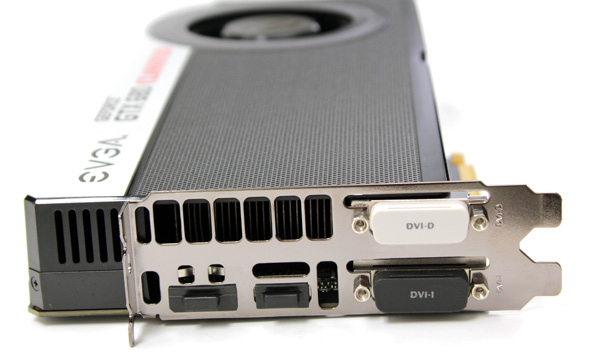Index
The GTX 680 Classified is bigger than the reference card, but is designed to take up two slots in width. At the same time, this allows enthusiasts to chain up to four GTX 680 Classifieds in Quad SLI. The Classified’s cooler is a touch up of the reference (GTX 580) cooler, where EVGA extended the heatsink and replaced the 6.5 fan with an 8cm one.
Many of Nvidia’s partners have gone with dual fan coolers in order to keep thermals in check. In fact, thermals tend to be the biggest limitation in overclocking GTX 680s, so some companies threw in three or more fans. Naturally, such cards are wider than two slots, so you can forget about Quad SLI.
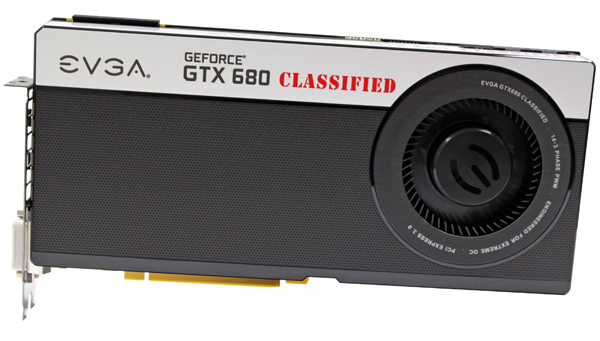
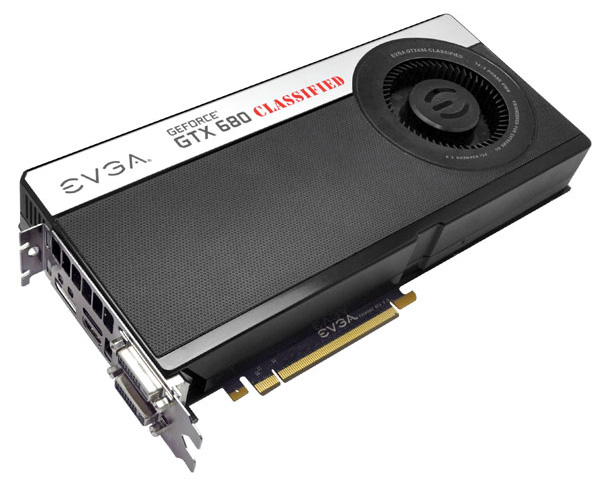
The fan has a speed limit and it won’t go faster than 55%, i.e. more than 3240 RPM. Although factory overclocked, the GTX 680 Classified was a bit quieter than the reference model, in other words – it’s quiet.
On the back you see GDDR5 memory modules that were added to double the capacity to 4GB.
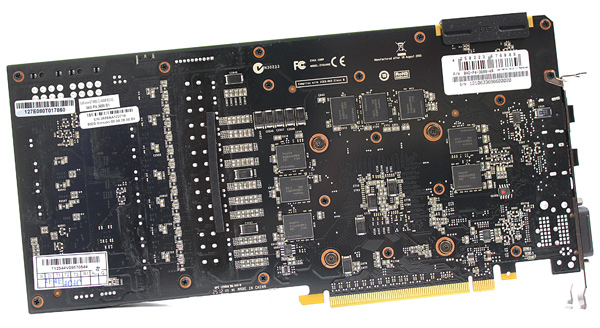
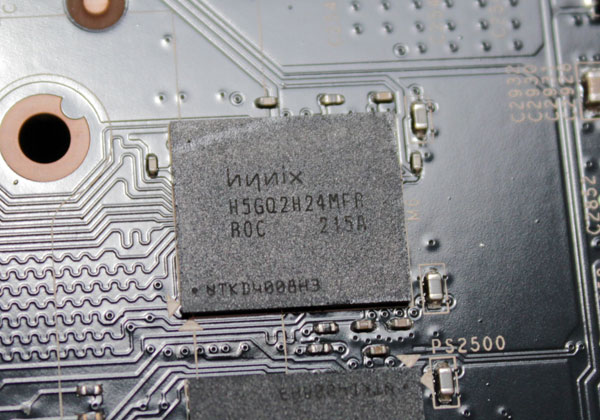
The plastic shroud isn’t difficult to take off, especially since the cooler is very similar to the reference one.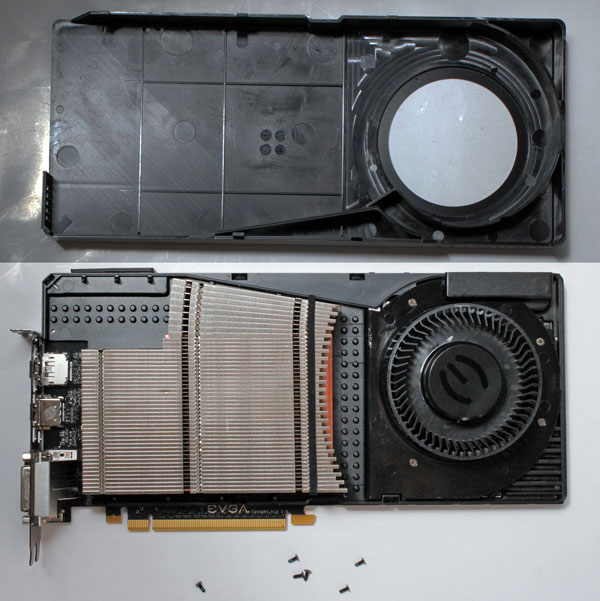
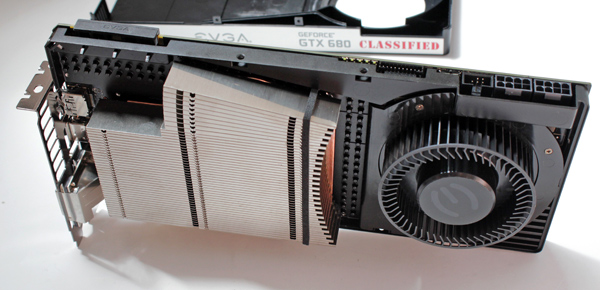
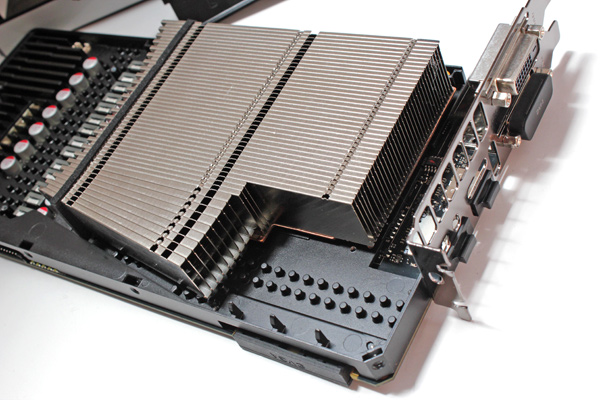
The fan is taken off easily, which should come in handy come cleaning time.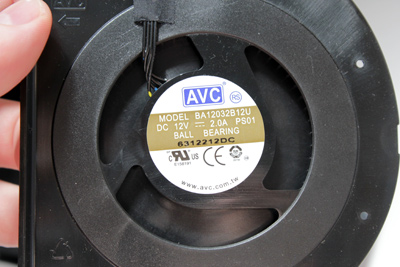
EVGA made the heatsink wider and once we took it off, we saw that the GTX 680 Classified uses Vapor Chamber technology (reference GTX 680 cards come with regular, copper blocks). The cooler also has a Vapor Chamber heatpipe that helps with heat distribution. All in all, the cooler looks much like the one on GTX 580 cards.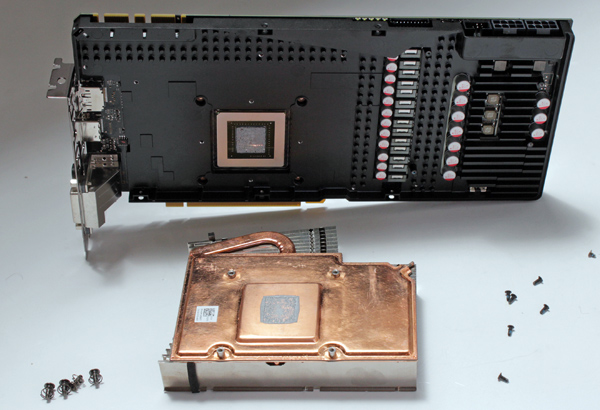
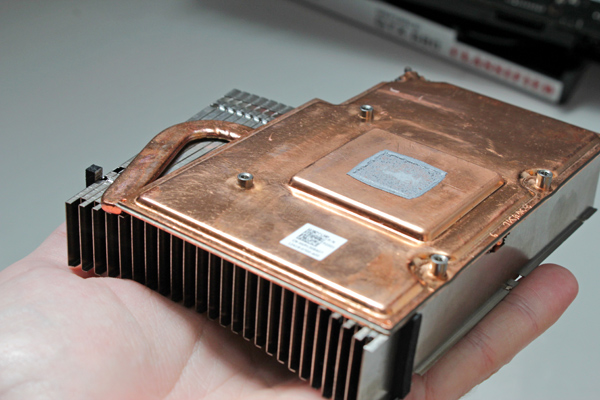
The memory is cooled by a large heatspreader, which spans the entire PCB and does a good job of reinforcing it. The power components are easy to spot and you can count 14 phases yourself. The Classified packs a 14+3 phase VRM, whereas the reference card has 4+2 VRM.
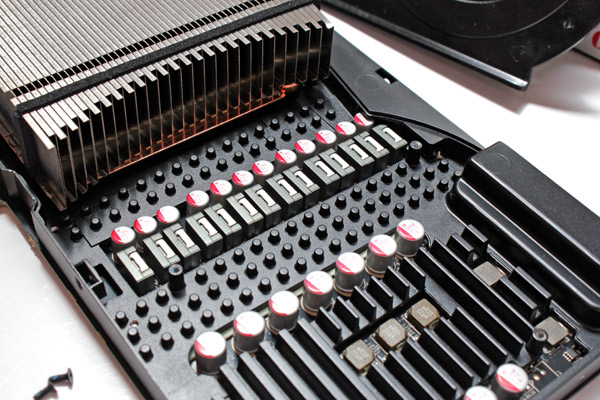
Overclocking and overvolting requires power, so the card comes with two 8-pin connectors. Factoring in the power it gets via PCI Express, the Classified can draw up to 375W. Note that reference cards come with one 6-pin and one 8-pin connector, allowing for 300W.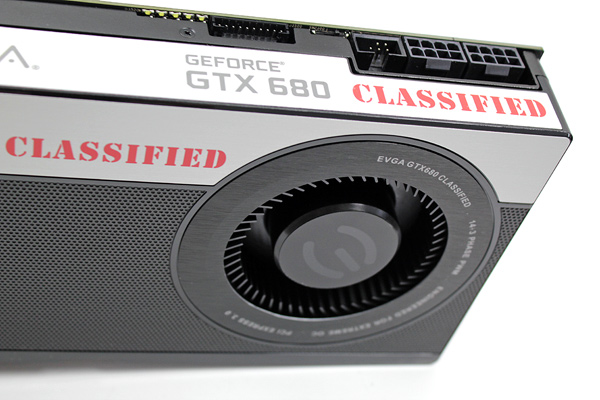
Among the features that make the Classified stand out is the EVBot connector, which is right next to the power connectors. Note however that the EVBot is purchased separately. We hooked it up to the card via a 105cm long cable and used it to boost the voltage beyond 1.175v (advised at 0.0625v increments).
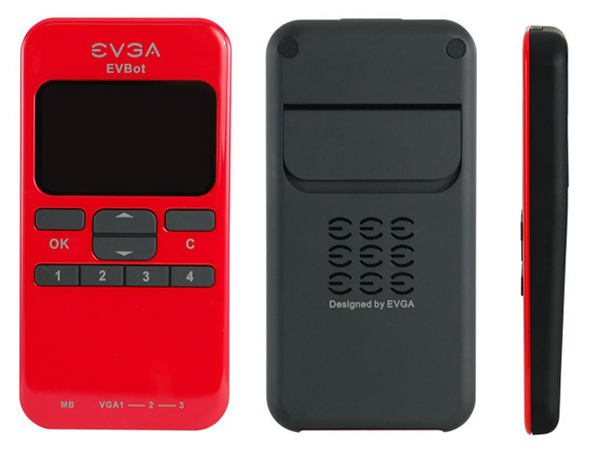
GTX 580 Classified’s EVBot connector was on the I/O panel, but we like the new placement as well. Besides, most new cases come with watercooling holes, which can be used to route the cable from the back.
The GTX 680 Classified isn’t short on interesting features, and the BIOS switch next to the EVBot connector is one of them. The switch offers Normal, OC and LN2 BIOS’, LN2 mode disables some power protections for extreme overclocking. Unfortunately, it didn’t help with extreme overclocking as the cooler quickly turned out to be the choke point.
Voltage monitoring header gets quite handy when overvolting, and you’ll find it next to the BIOS switch (EVGA will make a small adapter separately that will make voltage probes able to attach easily).
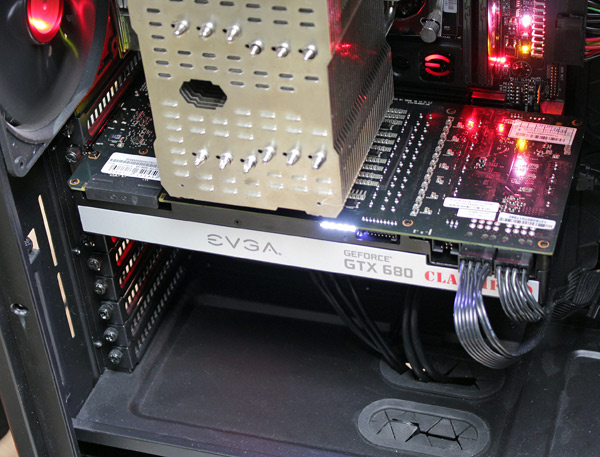
The I/O panel holds standard HDMI and DisplayPort connectors, as well as two dual link DVI outs, just like on the reference GTX 680 cards. EVGA made the I/O panel air exhausts bigger to improve airflow but one part of the cooler will stay behind. Unfortunately, this means that some of the hot air will remain in the case.
